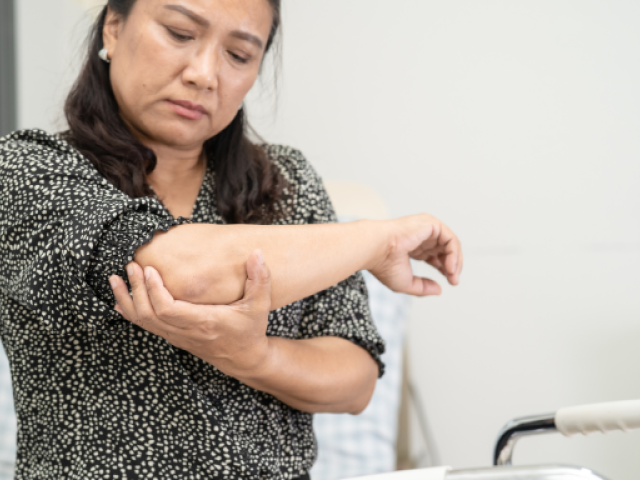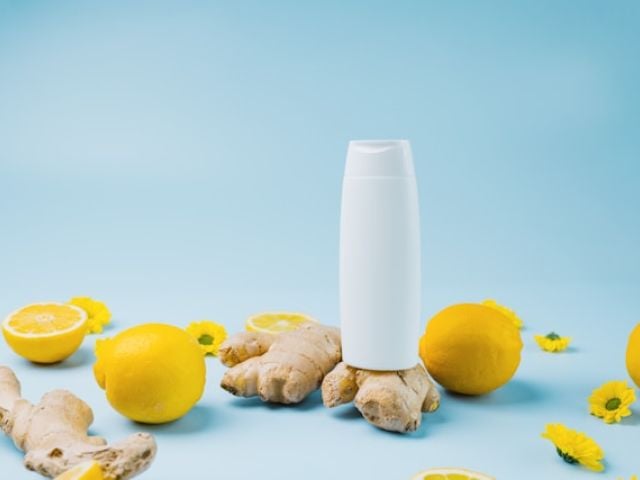
NSAID Alternatives: 11 Non-NSAID Pain Relievers to Consider
NSAID alternatives provide effective pain relief without the cardiovascular and gastrointestinal risks associated with traditional anti-inflammatory drugs. These 11 evidence-based options include natural compounds, pharmaceutical alternatives, and medical procedures.
Over 16 million Americans take NSAIDs regularly, yet 30% experience serious side effects including stomach ulcers, kidney damage, and increased heart disease risk. People with existing health conditions, those over 65, and individuals taking blood thinners face even greater dangers.
This guide examines 11 proven alternatives to NSAIDs that deliver pain relief through safer mechanisms. Natural options like curcumin and boswellia, pharmaceutical alternatives such as acetaminophen, and targeted medical interventions offer effective solutions without long-term health risks.
Key Takeaways
- NSAIDs increase heart disease risk by 20-50% with long-term use and cause 16,500 deaths annually from stomach bleeding
- Natural compounds like curcumin reduce arthritis pain by 58% compared to placebo, matching ibuprofen effectiveness
- Acetaminophen provides pain relief without gastrointestinal or cardiovascular side effects when used under 4,000mg daily
- Topical treatments deliver targeted relief with less than 5% systemic absorption compared to oral medications
Why People Seek Alternatives to NSAIDs

Nonsteroidal anti-inflammatory drugs (NSAIDs) work well for many people, but they come with major drawbacks. Understanding these limitations helps explain why alternatives matter.
The Hidden Effects of NSAID Use
Regular NSAID use carries more risks than most people realize. These medications can cause serious health problems over time.
Stomach ulcers rank among the most common complications. NSAIDs irritate the stomach lining, leading to bleeding and pain.1
Kidney damage is another serious concern. People who take NSAIDs long-term face an increased risk of kidney problems and cardiovascular disease.
Side Effects of NSAIDs and Heart Failure Risk
Heart disease risk increases by 20-50% with regular NSAID use. These medications elevate blood pressure and strain the cardiovascular system through multiple pathways.2
Heart failure risk doubles in adults over 65 who use NSAIDs regularly. The combination of kidney strain and cardiovascular effects creates compounding dangers for older populations.
Bleeding complications occur in 1-4% of NSAID users annually. This risk becomes life-threatening for people taking blood thinners or those with bleeding disorders.
Who Should Avoid NSAIDs
5 specific groups of people face elevated risks with NSAID use and require alternative pain management strategies:
- Adults with kidney disease or heart failure (22-208% increased mortality risk depending on specific NSAID)3
- Individuals taking blood thinners (2x higher overall bleeding risk)4
- People with stomach ulcer history (31% five-year recurrence rate)5
- Pregnant women in the third trimester (9% increased preterm birth risk)6
- Adults over 65 (2x higher acute kidney injury risk within 30 days)7
If you fall into any of these categories, NSAID alternatives become especially important for your health.
11 NSAID Alternatives: Quick Comparison
| Alternative | Type | Pain Relief Timeline | Best For | Safety Rating |
|---|---|---|---|---|
| Acetaminophen | Pharmaceutical | 30-60 minutes | General pain, fever | High |
| Topical treatments | Pharmaceutical | 15-30 minutes | Localized pain | Very High |
| Curcumin | Natural | 1-2 weeks | Arthritis, inflammation | High |
| Boswellia | Natural | 7-28 days | Joint pain | High |
| White willow bark | Natural | 2-4 hours | Back pain | Moderate |
| Bromelain | Natural enzyme | 3-7 days | Post-surgery, injuries | High |
| Ginger | Natural | 1-3 days | Muscle soreness | High |
| Quercetin | Natural | 2-4 weeks | Chronic pain | High |
| Nerve blocks | Medical procedure | Immediate | Targeted pain | Moderate |
| Physical therapy | Non-pharmaceutical | 2-8 weeks | Chronic conditions | Very High |
| Mind-body therapy | Non-pharmaceutical | 4-12 weeks | Chronic pain | Very High |
Over-the-Counter Pharmaceutical Alternatives

Several prescription and over-the-counter medications can give pain relief without the inflammatory action of NSAIDs.
1. Acetaminophen
Acetaminophen provides effective pain relief without the cardiovascular and gastrointestinal risks of NSAIDs. This medication works differently from NSAIDs by blocking pain signals in the brain rather than reducing inflammation.8
Acetaminophen reduces pain intensity by 13-22% compared to placebo in clinical trials. It eliminates stomach bleeding risk and does not increase cardiovascular events, making it safer for long-term use than NSAIDs.
Doctors recommend acetaminophen as first-line treatment for osteoarthritis, back pain, headaches, and muscle aches. Studies show 650mg doses provide pain relief equivalent to 400mg ibuprofen without gastrointestinal side effects.
The primary safety concern involves liver toxicity at doses exceeding 4,000mg daily. Staying below 3,000mg daily provides maximum safety margins for most adults.
2. Topical Pain Relievers
Topical treatments offer another excellent alternative to oral NSAIDs. These medications work directly at the pain site with minimal absorption into your bloodstream.
Lidocaine patches give numbing relief for nerve pain. The 5% patches work especially well for post-shingles pain and other nerve conditions.9
Topical NSAIDs like diclofenac gel can reduce inflammation locally. This approach gives you anti-inflammatory benefits while avoiding systemic side effects that come with oral NSAIDs.
Capsaicin cream offers another option by depleting pain-transmitting chemicals from nerve endings. It takes time to work but can deliver lasting relief for arthritis and nerve pain.
Natural Anti-Inflammatory NSAID Alternatives

Nature gives us several compounds that can match the pain-relieving power of conventional medications. These natural options often come with fewer side effects and additional health benefits.
3. Curcumin
Curcumin reduces arthritis pain by 45-58% in clinical trials, matching the effectiveness of prescription NSAIDs. This active compound from turmeric has impressive anti-inflammatory properties that block inflammatory pathways without cardiovascular risks.10
Clinical trials show that daily curcumin reduces osteoarthritis pain as effectively as ibuprofen. Participants experienced significant improvements within 4-6 weeks with fewer side effects than NSAID users.11
Curcumin blocks 5 major inflammatory pathways including COX-2 enzymes and nuclear factor-kappa B (NF-κB). This multi-target approach provides broader anti-inflammatory effects than single-pathway medications.
Raw turmeric contains only 2-6% curcumin, requiring concentrated supplements for therapeutic effects. Jinfiniti’s Extra Strength Turmeric+ addresses bioavailability with black pepper extract, which increases curcumin or turmeric absorption by 2,000%.
4. Boswellia
Boswellia serrata has shown remarkable pain-relieving properties in multiple clinical trials. This herb works through different inflammatory pathways than NSAIDs, making it a true alternative.
Clinical trials reveal that Boswellia cuts osteoarthritis pain within just 7 days. Participants saw 12.18% improvements in pain scores.12
The herb gives pain relief comparable to conventional treatments. Researchers suggest treating for at least 4 weeks for best results.13
A 2025 study found that 60mg of standardized Boswellia extract for 10 days cut muscle soreness after intense exercise. The effects lasted up to 72 hours post-exercise.14
Boswellia works by blocking inflammatory enzymes called 5-lipoxygenase. This mechanism differs from NSAIDs, making it valuable for people who can’t tolerate traditional anti-inflammatory medications.
For more detailed information about dosing and safety, read our guide on Boswellia benefits for inflammation.
5. White Willow Bark
White willow bark contains salicin, which your body converts to salicylic acid. This makes it similar to aspirin but with a gentler profile and fewer side effects.
Testing shows that willow bark reduces lower back pain more effectively than placebo. Higher doses prove more effective for chronic pain relief.15
The bark contains at least 13 active compounds including flavonoids and polyphenols. These work together to give anti-inflammatory effects beyond just salicin.16
Trials using combination formulas show 37% pain reduction compared to 16% with placebo. This suggests willow bark works best when combined with other natural compounds.17
A pilot study found that 798mg salicin daily for 5 days after exercise showed lower muscle soreness scores. While promising, more testing is needed to confirm these benefits.18
6. Bromelain
Bromelain offers a unique approach to pain relief through its enzyme activity. This protein-digesting enzyme from pineapples gives both anti-inflammatory and pain-relieving effects.
Clinical evidence shows that bromelain cuts post-operative inflammation and pain. Taking it before and after surgery gives the best results.19
The enzyme reduces inflammatory markers like C-reactive protein by 32% compared to placebo. This shows real measurable effects on inflammation throughout the body.
Trials using 90mg bromelain combined with other enzymes showed major pain improvements within 3 days. The combination approach appears more effective than bromelain alone.20
Bromelain works by reducing inflammatory cytokines and modulating immune responses. This makes it valuable for acute injuries and post-surgical healing.
For the best results, take bromelain on an empty stomach between meals. This allows the enzyme to work systemically rather than just helping with digestion.
7. Ginger
Ginger contains powerful compounds called gingerols and shogaols that give natural pain relief. These substances work by inhibiting prostaglandin synthesis, similar to how NSAIDs function.
Evidence shows that ginger reduces muscle pain after intense physical activity. The anti-inflammatory mechanisms help speed recovery from exercise.21
Trials show moderate to large reductions in muscle pain when people consume 2g daily for 11 days. This suggests consistent use gives better results than occasional dosing.
Ginger inhibits pro-inflammatory cytokines including TNF-α, IL-1β, and IL-8. These are the same inflammatory markers targeted by prescription medications.
The active compounds work by suppressing 5-lipoxygenase and prostaglandin synthetase. This gives natural anti-inflammatory effects similar to conventional medications.22
Ginger pairs well with turmeric for better benefits. Learn more about this powerful combination in our article about ginger and turmeric working better together.
8. Quercetin
Quercetin stands out as one of the most promising natural alternatives for chronic pain management. This flavonoid works through multiple mechanisms that target both inflammation and pain signals.
Lab studies show that quercetin gives pain relief superior to gabapentin and morphine in some nerve pain models. This suggests powerful potential for human applications.23
The compound suppresses glial cell activation in the spinal cord and nerve roots. This action helps reduce the amplification of pain signals that occurs in chronic conditions.
Quercetin reduces pro-inflammatory cytokines including TNF-α, IL-1β, and IL-6. It also modulates brain chemistry involved in chronic pain processing.
While clinical trials in humans are still needed, the extensive lab evidence and established safety profile make quercetin promising for pain management.
Here’s what makes quercetin even better. It works well when combined with bromelain. The enzyme boosts quercetin absorption while giving its own anti-inflammatory benefits. Read our detailed guide on quercetin with bromelain benefits to learn more.
Jinfiniti’s SenoAid™ senolytic supplement contains quercetin along with other natural compounds for inflammatory support. This formula targets cellular senescence while giving pain relief benefits.
Medical Interventions for Musculoskeletal Pain

When natural alternatives aren’t enough, several medical procedures can give targeted pain relief without the systemic effects of oral medications.
9. Nerve Blocks for Targeted Pain Relief
Nerve blocks offer a sophisticated approach to pain management. These procedures involve injecting medication near specific nerves to interrupt pain signals.
Common applications include epidural injections for spinal conditions and facet joint injections for arthritis-related back pain. Peripheral nerve blocks work well for localized pain conditions.
The benefits include immediate pain relief and diagnostic capability. These procedures can help identify the source of pain while giving treatment.
When combined with other therapies like physical therapy, nerve blocks can deliver relief for pain associated with various conditions. This makes them valuable tools in pain management.
Non-Pharmaceutical Approaches to Reduce Pain

Sometimes the best pain relief comes from approaches that don’t involve any medications at all. These methods address pain at its source rather than just masking symptoms.
10. Physical Therapy
Physical therapy addresses pain through targeted movement and exercise. Evidence shows that movement-based therapies become more effective with practice.24
The benefits include improved strength, flexibility, and function. Unlike medications, physical therapy gives long-term improvements that last beyond treatment.
Key advantages include addressing root causes rather than just symptoms. This approach helps prevent future pain episodes.25
Physical therapy works well when combined with other treatments. The movement helps improve healing while other interventions manage acute symptoms.
11. Mind-Body Therapies for Chronic Pain
Mind-body interventions have shown effectiveness for chronic pain conditions. Multiple reviews support their use as evidence-based treatments.26
Meditation, hypnosis, and cognitive behavioral therapy show the strongest evidence base. These approaches help change how the brain processes pain signals.27
The benefits include reduced pain intensity and improved quality of life. Many people also experience better sleep and reduced anxiety related to chronic pain.
These techniques work best with consistent practice over time. Like physical therapy, the benefits increase with regular use rather than occasional application.
Combining Treatments to Reduce Inflammation and Provide Relief

Multimodal pain management strategies provide 30-50% better outcomes than single-intervention approaches. Combining complementary mechanisms targets pain through different pathways for superior relief.
Possible combinations include:
- Curcumin with physical therapy for joint pain and stiffness
- Topical analgesics combined with nerve blocks for localized pain
- Natural compounds paired with mind-body techniques for complete care
This multimodal approach allows you to use lower doses of each intervention. It also gives backup options when one treatment becomes less effective.
Many people find that natural herbs and spices that fight inflammation work well together. The compounds often boost each other’s effects while giving complementary benefits.
Studies have shown that combining natural anti-inflammatory compounds can reduce pain more effectively than using any single treatment. This approach also helps minimize the risk of heart problems associated with long-term pharmaceutical use.
Finding Your Best Pain Management Strategy

Choosing the right alternative depends on your specific pain condition, health status, and personal preferences. Start with safer options like acetaminophen or topical treatments before moving to more complex interventions.
Natural anti-inflammatory compounds like curcumin and quercetin offer excellent safety profiles with multiple health benefits. They work well for chronic inflammatory conditions without kidney damage risk.
For acute pain, combinations of acetaminophen with natural compounds often deliver effective relief. Chronic pain may require more approaches including mind-body techniques.
Always work with healthcare professionals when developing your pain management strategy. They can help you avoid interactions and monitor for side effects while improving your results.
Consider starting with a single approach and adding others as needed. This allows you to identify which treatments work best for your specific situation.
Discover the Root Causes of Your Chronic Pain
Chronic pain often stems from hidden inflammatory processes and cellular dysfunction that standard blood tests miss. Jinfiniti’s AgingSOS® Biomarker Panel measures 22 key markers including inflammatory cytokines, oxidative stress, and cellular senescence—the underlying factors that drive persistent pain.
Bottom Line
These 11 NSAID alternatives deliver effective pain relief without the 20-50% increased cardiovascular risk and 16,500 annual deaths associated with traditional anti-inflammatory drugs.
Natural compounds like curcumin, boswellia, and quercetin provide 45-58% pain reduction in clinical trials with superior safety profiles. Pharmaceutical alternatives including acetaminophen and topical treatments offer targeted relief with minimal systemic effects.
Start with the safest options: acetaminophen for general pain, topical treatments for localized discomfort, and curcumin for inflammatory conditions. Add complementary therapies like physical therapy or mind-body techniques for comprehensive pain management.
Work with healthcare professionals to develop personalized strategies that address your specific pain conditions while protecting long-term health. These evidence-based alternatives provide effective relief without compromising cardiovascular or gastrointestinal safety.
Referenced Sources:
- https://www.mayoclinic.org/chronic-pain-medication-decisions/art-20360371 ↩︎
- https://www.bmj.com/content/357/bmj.j1909 ↩︎
- https://pubmed.ncbi.nlm.nih.gov/19171810/ ↩︎
- https://www.escardio.org/The-ESC/Press-Office/Press-releases/risk-of-internal-bleeding-doubles-when-people-on-anticoagulants-take-nsaid-paink ↩︎
- https://pmc.ncbi.nlm.nih.gov/articles/PMC8907029/ ↩︎
- https://pmc.ncbi.nlm.nih.gov/articles/PMC8451913/ ↩︎
- https://bjgp.org/content/66/645/172 ↩︎
- https://arthritis.ca/treatment/medication/medication-reference-guide/medications/acetaminophen ↩︎
- https://pubmed.ncbi.nlm.nih.gov/31900074/ ↩︎
- https://pmc.ncbi.nlm.nih.gov/articles/PMC10264675/ ↩︎
- https://journal.ppcr.org/index.php/ppcrjournal/article/view/103 ↩︎
- https://pmc.ncbi.nlm.nih.gov/articles/PMC7368679/ ↩︎
- https://pmc.ncbi.nlm.nih.gov/articles/PMC4175880/ ↩︎
- https://www.frontiersin.org/journals/sports-and-active-living/articles/10.3389/fspor.2025.1488821/full ↩︎
- https://www.webmd.com/vitamins/ai/ingredientmono-955/willow-bark ↩︎
- https://pmc.ncbi.nlm.nih.gov/articles/PMC10607963/ ↩︎
- http://nutritionj.biomedcentral.com/articles/10.1186/1475-2891-12-154 ↩︎
- http://ajkinesiol.org/journal/view.php?doi=10.15758/ajk.2021.23.4.40 ↩︎
- https://journals.sagepub.com/doi/10.1177/1759720X231186875 ↩︎
- https://ijoro.org/index.php/ijoro/article/view/2388 ↩︎
- https://pmc.ncbi.nlm.nih.gov/articles/PMC3665023/ ↩︎
- https://www.mdpi.com/2223-7747/11/17/2296 ↩︎
- https://pubmed.ncbi.nlm.nih.gov/35959909/ ↩︎
- https://healthcare.utah.edu/healthfeed/2025/01/pain-relief-through-physical-therapy ↩︎
- https://www.cascadeortho.net/blog-post-base/8-key-benefits-of-physical-therapy-for-pain-management ↩︎
- https://jamanetwork.com/journals/jamainternalmedicine/fullarticle/2753680 ↩︎
- https://pubmed.ncbi.nlm.nih.gov/31682676/ ↩︎

Get weekly health insights and exclusive offers by joining our newsletter.










